Summer Research Experience for Undergraduates
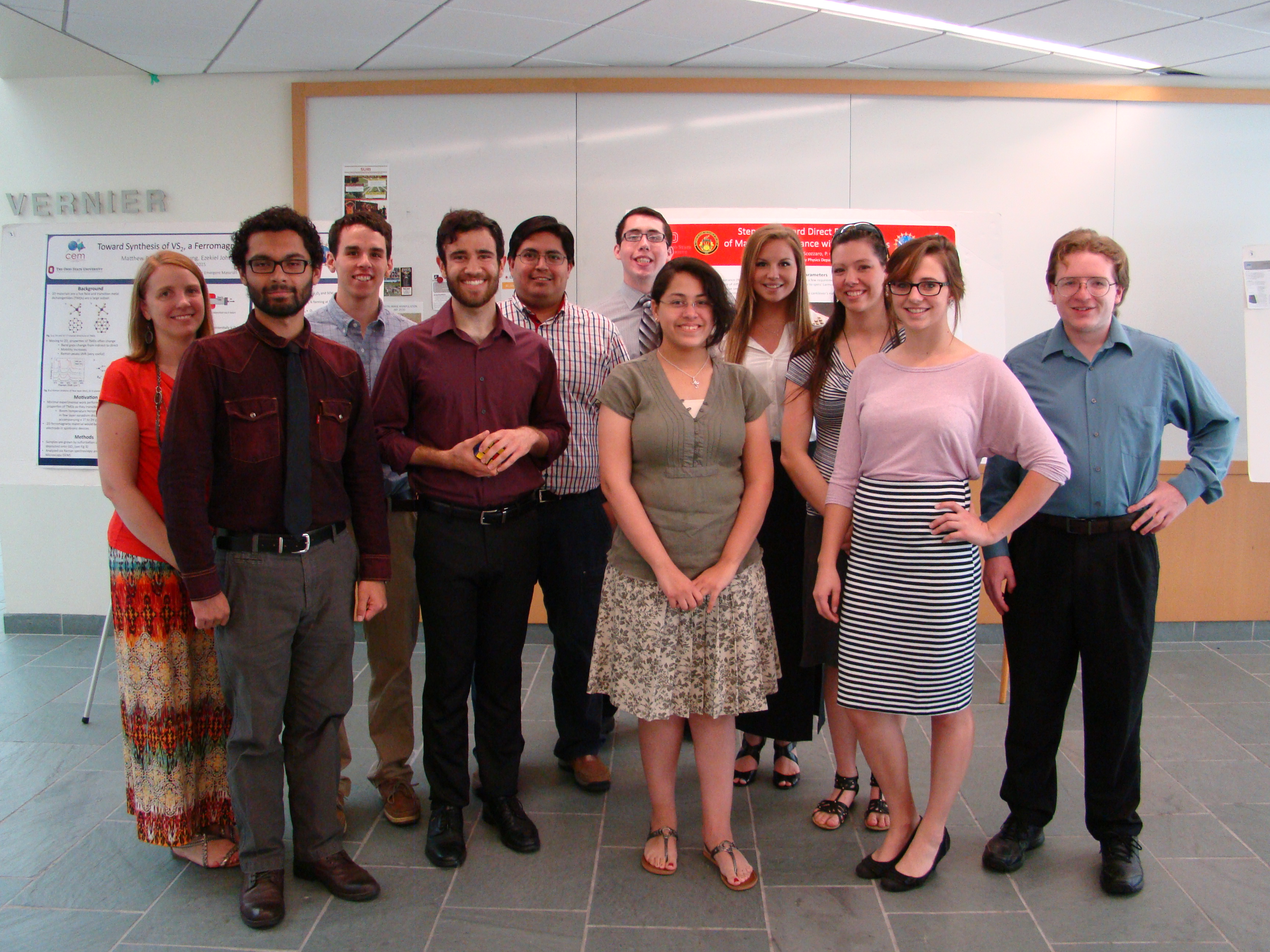 2015 Summer REU Student Information & Research Abstracts
2015 Summer REU Student Information & Research Abstracts
 Name: Matthew Barone
Undergraduate Institution: University of Virginia
Major: Engineering Science and Physics
REU Advisor: Dr. Ezekiel Johnston-Halperin
Project Title: Chemical vapor deposition of VS2, a ferromagnetic 2D material
Abstract:
Name: Matthew Barone
Undergraduate Institution: University of Virginia
Major: Engineering Science and Physics
REU Advisor: Dr. Ezekiel Johnston-Halperin
Project Title: Chemical vapor deposition of VS2, a ferromagnetic 2D material
Abstract:
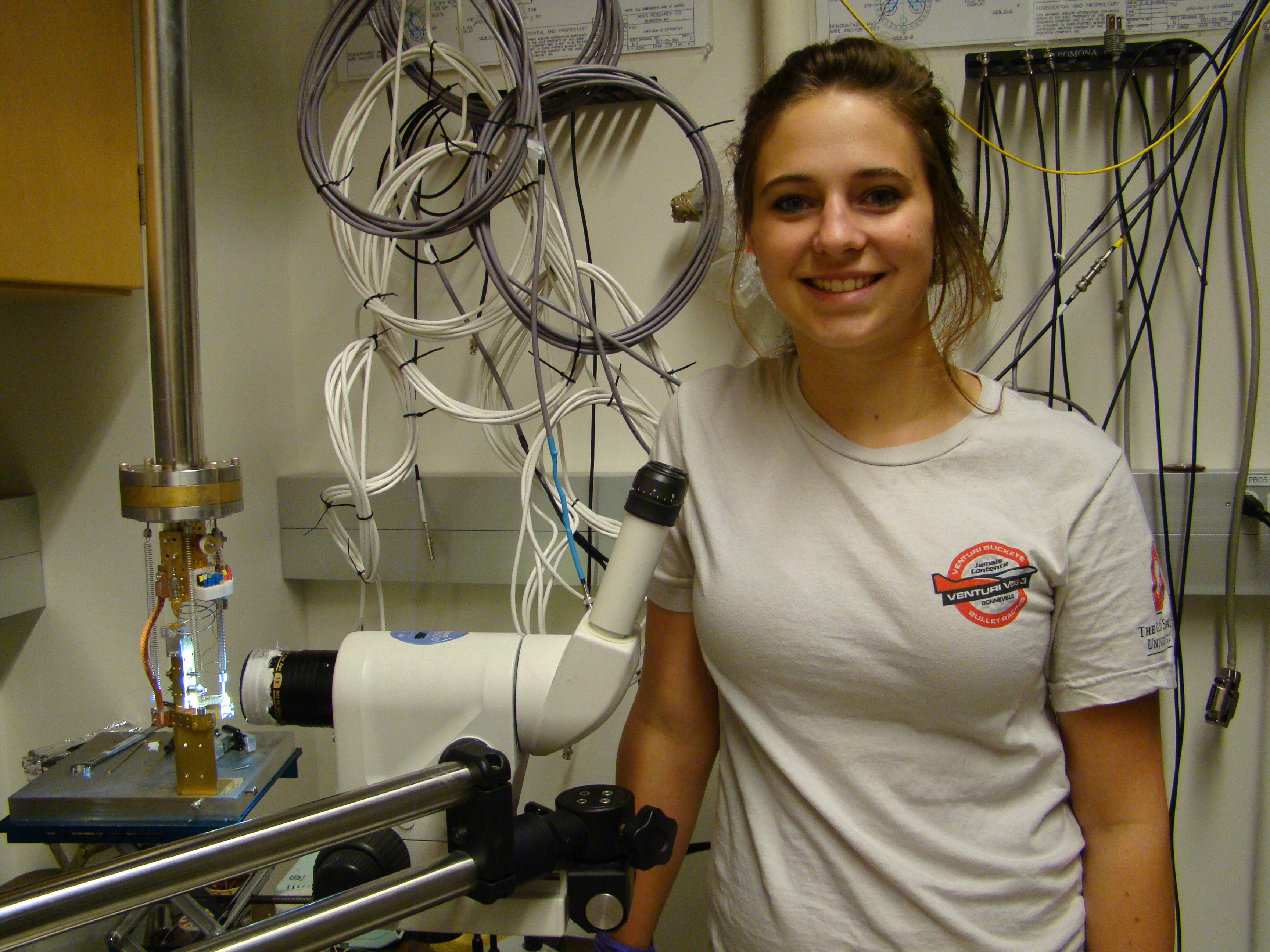 Name: Amanda Belding
Undergraduate Institution: The Ohio State University
Major: Engineering Physics
REU Advisor: Dr. Chris Hammel
Project Title: Membrane project: Direct detection of magnetic resonance
Abstract:
The goal is to create a Nuclear Magnetic Resonance (NMR) probe that mechanically detects the resonance of different solid samples. Since quality membranes are noise sensitive, the setup will optimize the new probe and character experimental parameters.
Name: Amanda Belding
Undergraduate Institution: The Ohio State University
Major: Engineering Physics
REU Advisor: Dr. Chris Hammel
Project Title: Membrane project: Direct detection of magnetic resonance
Abstract:
The goal is to create a Nuclear Magnetic Resonance (NMR) probe that mechanically detects the resonance of different solid samples. Since quality membranes are noise sensitive, the setup will optimize the new probe and character experimental parameters.
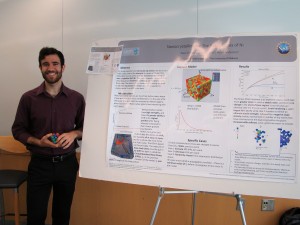 ristodoulou
Undergraduate Institution: The Ohio State University
Major: Material Science and Engineering
REU Advisor: Dr. Peter Anderson
Project Title: Variation of critical resolved shear stress on finite element modeling of nanocrystalline Ni
Abstract:
ristodoulou
Undergraduate Institution: The Ohio State University
Major: Material Science and Engineering
REU Advisor: Dr. Peter Anderson
Project Title: Variation of critical resolved shear stress on finite element modeling of nanocrystalline Ni
Abstract:
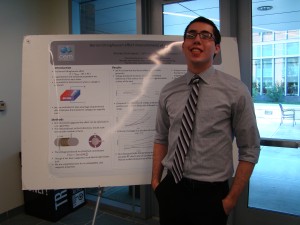 Name: Michael Dominguez
Undergraduate Institution: University of Iowa
Major: Engineering Physics
REU Advisor: Dr. Roberto Myers
Name: Michael Dominguez
Undergraduate Institution: University of Iowa
Major: Engineering Physics
REU Advisor: Dr. Roberto Myers
Project Title: Nernst-Ettinghausen effect measurements of nickel in a coil geometry
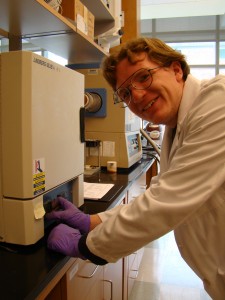 Name: Cooper Gates
Undergraduate Institution: Oregon State University
Major: Chemistry
REU Advisor: Dr. Pat Woodward
Name: Cooper Gates
Undergraduate Institution: Oregon State University
Major: Chemistry
REU Advisor: Dr. Pat Woodward
Project Title: In pursuit of a new perovskite-type phase resonance
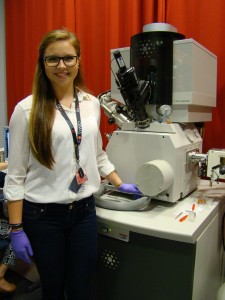 Name: Kimberly Holmes
Undergraduate Institution: Muskingum University
Major: Chemistry/Business Management, Marketing
REU Advisor: Dr. David McComb
Project Title: Nano-indentation: Composition of new bone versus old bone
Abstract:
The growing population is beginning to live longer. However, age and tooth loss are directly correlated. As the population begins to loose teeth, the most beneficial solution is the dental implant. This implant is directly drilled into the bone and, eventually, fusses with the bone. In order to improve the success rate of these dental implants, the various properties of the bone must be identified. Through previous testing, it is found that the old bone is more dense and harder than the new bone. It is hypothesized that the difference in hardness is due to the calcium and phosphorus levels in the bone. Using TEM and EDS technology, the chemical composition of the new bone and old bone.
Name: Kimberly Holmes
Undergraduate Institution: Muskingum University
Major: Chemistry/Business Management, Marketing
REU Advisor: Dr. David McComb
Project Title: Nano-indentation: Composition of new bone versus old bone
Abstract:
The growing population is beginning to live longer. However, age and tooth loss are directly correlated. As the population begins to loose teeth, the most beneficial solution is the dental implant. This implant is directly drilled into the bone and, eventually, fusses with the bone. In order to improve the success rate of these dental implants, the various properties of the bone must be identified. Through previous testing, it is found that the old bone is more dense and harder than the new bone. It is hypothesized that the difference in hardness is due to the calcium and phosphorus levels in the bone. Using TEM and EDS technology, the chemical composition of the new bone and old bone.
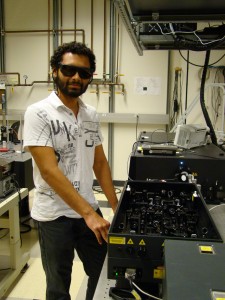 Name: Nelson Moreno
Undergraduate Institution: University of California
Major: Physics and Japanese
REU Advisor: Dr. Rolando Valdés Aguilar
Project Title: Electrical characterization of graphene using terahertz time-domain spectroscopy (TTDS)
Abstract:
Name: Nelson Moreno
Undergraduate Institution: University of California
Major: Physics and Japanese
REU Advisor: Dr. Rolando Valdés Aguilar
Project Title: Electrical characterization of graphene using terahertz time-domain spectroscopy (TTDS)
Abstract:
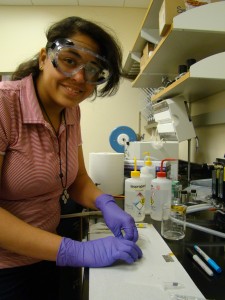 Name: Merna Philip
Undergraduate Institution: Columbus State Community College
Major: Undeclared Associate of Science
REU Advisor: Dr. Josh Goldberger
Project Title: Exfoliation of single-layer and multilayer GeH nanosheets
Abstract:
Name: Merna Philip
Undergraduate Institution: Columbus State Community College
Major: Undeclared Associate of Science
REU Advisor: Dr. Josh Goldberger
Project Title: Exfoliation of single-layer and multilayer GeH nanosheets
Abstract:
Graphene in single-atom thick sheets is used in studying electrons transferring because of its superconductivity and high mobility. Graphene does not have band gap which can help in switch ON/OFF ratio in transistors when electrons move through its material. GeH and NaSn2As2 are new materials that have been studied in order to know their physical probabilities, and how they can make the heat and the electrons transfer through their materials. The bulk material of GeH is used in building transistors because it has an indirect band gap. GeH and NaSn2As2 which have van der Waals interactions among their bounds are crystal material can be exfoliated to single layer and multilayers nanosheets of layers by using PDMs method of exfoliation. Mechanically exfoliation GeH and NaSn2As2 crystal materials in single layers or few multilayers of nanosheets can give clean, flate, and high-quality flakes. Therefore, after exfoliation to nanosheets layers, we put them on Si/SiO2 to distinguish between single layers and multilayers under the electronic microscope. Exfoliation of GeH to single layer or multilayer nanosheets helps in studying the directed band gap, electrons mobilities, vibration models, and fabrication. NaSn2As2 can also be exfoliated to single layers or few multilayers nanosheets which can help in studying their physical probabilities and the pattern chemical on their surface.
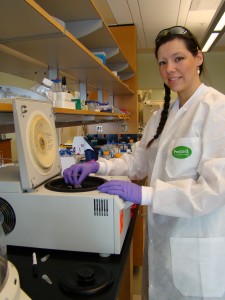 Name: Amy Rice
Undergraduate Institution: Columbus State Community College
Major: Biology
REU Advisor: Dr. Jessica Winter
Project Title: Optimization of quantum dots shell growth for DNA embedding
Abstract:
Name: Amy Rice
Undergraduate Institution: Columbus State Community College
Major: Biology
REU Advisor: Dr. Jessica Winter
Project Title: Optimization of quantum dots shell growth for DNA embedding
Abstract:
Here we are interest in a photo-switchable quantum dot system that employs photosensitive DNA and gold nanoparticles to switch between light and dark states via forster resonance energy transfer (FRET). To improve the application of this concept, the specific process for binding DNA to QDs is being investigated. Rather than attach the DNA to the QD surface, this concept deals with embedding the DNA into the QD ligand during shell growth in order to improve stability and conjugation ratios. This project describes an optimized procedure for quantum dot shell growth that was developed using methodology based on the work of Zhengtao et. all, 20125.1 It was found that after increasing MPA and DNA concentrations to 4 times the original amount, the fluorescence of the resulting samples was indicative of a more stable particle, however further study should be done to achieve reproducibility for this concept.
